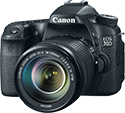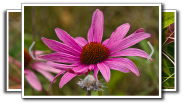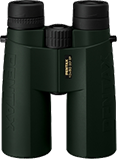soldier fly
(Odontomyia cincta)
Conservation • Description • Habitat • Ecology • Distribution • Taxonomy
|
|
||||||||||||||
Description |
Odontomyia cincta is a medium-sized to large, wasp-like soldier fly. It occurs in the United States from the East Coast through the Great Plains, and on the West Coast. It occurs in southern Canada from Nova Scotia to Manitoba. The larvae are aquatic and are found among emergent or floating vegetation. They feed on parts of aquatic vegetation and on aquatic organisms, including smaller individuals of their own species. Adults are always found near water. Adults are ⅜″ to ½″ (10 to 12 mm) in length. The body is green or yellow (green) with black markings. On the female, the head is hemispherical. There are two large compound eyes on the side of the head and three small but prominent simple eyes (ocelli) in a triangle on the top of the head (vertex). The compound eyes are bare, and they are widely separated at the top of the head. The vertex, the upper part of the front of the head (frons), corresponding to the forehead, and the face are green. On the vertex, the area containing the ocelli is triangular and black. On the frons, there is a round black spot adjacent to the inner margin of each compound eye. The antennae are long (for a fly) and are inserted just above the middle of the face. They have three segments. The first two segments are brownish yellow, the third segment is black, at least at the tip, and is divided into five ring-like segments (annulated). It does not have a bristle-like appendage (arista). The thorax is rectangular. The upper side is black. There is a prominent, green, longitudinal stripe on each lateral margin. The sides of the thorax are green. The green areas on the thorax are densely covered with short, erect, yellow hairs. The black areas are densely covered with appressed, golden hairs. The small plate between the abdomen and the thorax (scutellum) is green and prominent, and it has a pair of spines on the rear margin. The abdomen is green, egg-shaped when viewed from above, and flattened when viewed from the side. Segments 2 through 5 have a black band at the base. The black bands clearly extend all the way to the lateral margins. They are narrow at the lateral margins and broaden in the middle almost to the rear margin. The legs are mostly yellow. The last part of each leg (tarsus), corresponding to the foot, has five segments. The last four segments are brown. The wings are clear with yellowish veins. The third longitudinal vein is branched. On the male, the compound eyes meet at the top of the head. The thorax is somewhat square-shaped, and it is densely covered with fine, soft, erect hairs. The scutellum has a very narrow black band at the base. The black bands on the abdomen may or may not extend to the lateral margins. Abdominal segment 1 is entirely black except for a green spot on each lateral margin. On segments 2 through 5 the bands are broadly connected in the middle, effectively forming a longitudinal median stripe. |
Size |
Total length: ⅜″ to ½″ (10 to 12 mm) |
Similar Species |
Habitat |
|
Ecology |
Season |
May through July |
Behavior |
|
Life Cycle |
|
Larva Food |
Aquatic vegetation and aquatic organisms |
Adult Food |
|
Distribution |
||
|
Sources |
|
| 6/13/2025 | ||
Occurrence |
||
|
||
Taxonomy |
|
Order |
|
Suborder |
Brachycera |
Infraorder |
Orthorrhapha |
Parvorder |
Stratiomyomorpha (soldier flies and allies) |
Superfamily |
Stratiomyoidea |
Family |
Stratiomyidae (soldier flies) |
Subfamily |
Stratiomyinae |
Tribe |
Stratiomyini |
Genus |
Odontomyia |
Subordinate Taxa |
|
|
|
Synonyms |
|
Eulalia cincta Odontomyia brevifacies Odontomyia extremis Stratyomys viridicincta |
|
Common Names |
|
This species has no common name. The common name for the family Stratiomyidae is soldier flies, and it is applied here for convenience. |
|
Glossary
Arista
A large bristle on the upper side of the third segment of the antenna of a fly. Plural: aristae.
Frons
The upper front part of an insect’s face, roughly corresponding to the forehead.
Ocellus
Simple eye; an eye with a single lens. Plural: ocelli.
Scutellum
The exoskeletal plate covering the rearward (posterior) part of the middle segment of the thorax in some insects. In Coleoptera, Hemiptera, and Homoptera, the dorsal, often triangular plate behind the pronotum and between the bases of the front wings. In Diptera, the exoskeletal plate between the abdomen and the thorax.
Tarsus
On insects, the last two to five subdivisions of the leg, attached to the tibia; the foot. On spiders, the last segment of the leg. Plural: tarsi.
Vertex
The upper surface of an insect’s head.
Visitor Photos |
||
Share your photo of this insect. |
||
This button not working for you? |
||
LeeAnne |
 |
Spotted inside the house. |
MinnesotaSeasons.com Photos |
||
|
||
|
||

Slideshows |
|

Visitor Videos |
||
Share your video of this insect. |
||
This button not working for you? |
||
|
Other Videos |
||
Green Soldier Fly rests with one wing out |
About
May 31, 2024 A green Soldier Fly (Odontomyia cincta) rests with one wing out at the Houston Arboretum & Nature Center, in Houston, TX, USA. I'm not sure why she had one wing out. Was it broken? |
Green Fly |
About
Jun 27, 2019 I think this is Odontomyia cincta |

|
Created: 6/13/2025 Last Updated: © MinnesotaSeasons.com. All rights reserved. |


